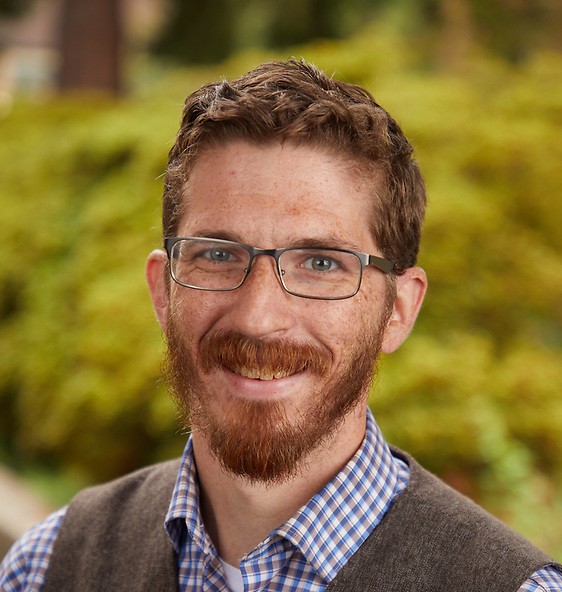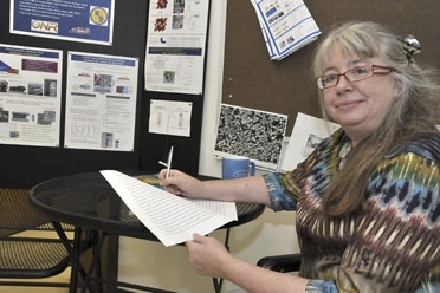Page 1 • (208 results in 0.017 seconds)
-

Resident Instructor of Mathematics | Department of Mathematics | paternnj@plu.edu | 253-535-8169
or Expertise Introductory Statistics Statistical Computing Selected Presentations Cascadia R Conference, Teaching Non-STEM Students to Code (June 2021) Professional Memberships/Organizations American Statistical Association , (2020 - Present)
Office HoursTu & Th: 10:00 am - 1:30 pmMon - Fri: - -
The Help Desk supports the following computing labs open to the PLU community (as well as a number of other departmental computing labs): Library - Digital Media Center Library - Haley Information
Classrooms, Labs, & Learning Technologies Classroom Support Support for the use of technology in the classroom. Classroom Support LabsThe Help Desk supports the following computing labs open to the PLU community (as well as a number of other departmental computing labs): Library – Digital Media Center Library – Haley Information Center Library – Library Instruction Center A Library – Library Instruction Center B Morken Center – Open Lab (114) Morken Center – Wiegand Multimedia Lab (115
-
16 semester hours, including: CSCI 120 or 144; or DATA 133 STAT 231, 232, or 233; or MATH/STAT 242 And at least: 8 additional semester hours of statistics selected from BUSA 467, ECON 344, PSYC 242,
conditional distributions, correlation, functions of random variables, moment generating functions, Bayesian and non-parametric inference, convergence of distributions. Cross-listed with MATH 342. Prerequisite: MATH 152 and four hours from STAT 231, 232, 233, or MATH/STAT 242. MATH 253 (or concurrent enrollment) is strongly recommended. (4) STAT 348 : Statistical Computing and Consulting Topics include qualitative data analysis, as well as the use of R statistical software to create data visualizations
-
Pacific Lutheran University provides computing and networking resources to students, faculty and staff.
Pacific Lutheran University provides computing and networking resources to students, faculty and staff. Use of these resources is a privilege granted to members of our community as we work and learn in an environment supportive of education and service. These policies, which apply to all users of PLU’s computing and information resources, consist of the following elements: General Use Network Use Policy Anti-Virus Software Policy Administrative Systems Use Policy Web Policy Help Desk staff
-
SPSS is a widely used statistical program utilized by many departments on the PLU campus. As of September 2011, PLU has purchased a license that includes at-home use for faculty, staff, and
SPSSSPSS is a widely used statistical program utilized by many departments on the PLU campus. As of September 2011, PLU has purchased a license that includes at-home use for faculty, staff, and students. This license includes the SPSS Base, Advanced and Regression modules and allows any member of the PLU community to download, install and license a copy of the program on a personal machine. Please follow the instructions below to download and install SPSS on a personally-owned machine. If
-
Computer and Network Use Policies Pacific Lutheran University provides computing and networking resources to students, faculty and staff. Use of these resources is a privilege granted to members of our community as we work and learn in an environment supportive of education and service. These policies, which apply to all users of PLU’s computing and...
Computer and Network Use Policies Pacific Lutheran University provides computing and networking resources to students, faculty and staff. Use of these resources is a privilege granted to members of our community as we work and learn in an environment supportive of education and service. These policies, which apply to all users of PLU’s computing and information resources, consist of the following elements: General Use Network Use Policy Anti-Virus Software Policy Administrative Systems Use
-
Platform Support Policy The university recognizes that faculty have diverse needs for academic computing resources and wishes to provide centralized support whenever possible. This desire must be tempered with the recognition that university resources are limited, and not every request can be met. In its centralized computing support, the university has attempted to maximize its...
Platform Support Policy The university recognizes that faculty have diverse needs for academic computing resources and wishes to provide centralized support whenever possible. This desire must be tempered with the recognition that university resources are limited, and not every request can be met. In its centralized computing support, the university has attempted to maximize its resources by supporting certain standard software programs and operating systems. Since the university standards may
-

Government scientist shares passion for empowering women and minorities By Katie Scaff ’13 The science world needs more women , particularly in academic and research institutions, said government scientist Debra Rolison. “They’re too white — and too male,” said Rolison. “There’s a statistical imbalance between…
September 7, 2012 Government scientist shares passion for empowering women and minorities By Katie Scaff ’13 The science world needs more women, particularly in academic and research institutions, said government scientist Debra Rolison. “They’re too white — and too male,” said Rolison. “There’s a statistical imbalance between women and men.” She argued for change in her field before students and professors at a seminar in Morken on PLU’s campus Friday afternoon. Scientist Debra Rolison spoke
-

PLU officials recently announced the launch of a new data science major, which will commence this fall semester. This strategic addition responds to the escalating interest among undergraduates in coursework dedicated to data science and analytics. The highly collaborative mathematics and computer science departments will…
PLU introduces new data science major to meet growing demand in data-driven economy Posted by: nicolacs / May 6, 2024 Image: Students work on group projects in the MATH 348 course titled “Statistical Computing and Consulting,” Friday, April 19, 2024, in Morken at PLU. (PLU Photo / Sy Bean) May 6, 2024 By MacKenzie HinesPLU Marketing & CommunicationsPLU officials recently announced the launch of a new data science major, which will commence this fall semester. This strategic addition responds to
-
Support for connecting personal computers in residence hall rooms to the campus network Computing questions through the student help desk Telephone repairs Assistance for problems with supported
What We SupportFor Students Support for connecting personal computers in residence hall rooms to the campus network Computing questions through the student help desk Telephone repairs Assistance for problems with supported software Troubleshooting assistance for personally-owned laptops and other mobile devices Voicemail support Information provided in handouts and on the web Email/web accounts Assistance with PLU Google Apps for Education accounts Assistance with department and club webpages
Do you have any feedback for us? If so, feel free to use our Feedback Form.


